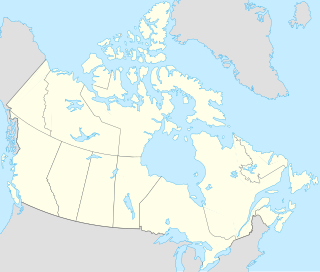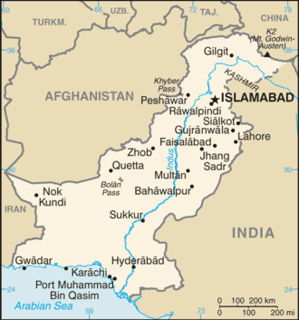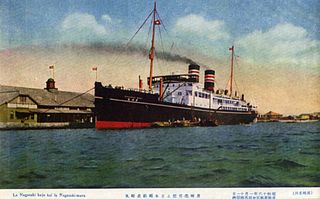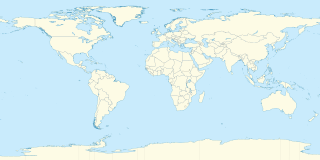
Maritime transport, fluvial transport, or more generally waterborne transport is the transport of people (passengers) or goods (cargo) via waterways. Freight transport by sea has been widely used throughout recorded history. The advent of aviation has diminished the importance of sea travel for passengers, though it is still popular for short trips and pleasure cruises. Transport by water is cheaper than transport by air, despite fluctuating exchange rates and a fee placed on top of freighting charges for carrier companies known as the currency adjustment factor (CAF).

Containerization is a system of intermodal freight transport using intermodal containers. The containers have standardized dimensions. They can be loaded and unloaded, stacked, transported efficiently over long distances, and transferred from one mode of transport to another—container ships, rail transport flatcars, and semi-trailer trucks—without being opened. The handling system is completely mechanized so that all handling is done with cranes and special forklift trucks. All containers are numbered and tracked using computerized systems.

The Manchester Ship Canal is a 36-mile-long (58 km) inland waterway in the North West of England linking Manchester to the Irish Sea. Starting at the Mersey Estuary near Liverpool, it generally follows the original routes of the rivers Mersey and Irwell through the historic counties of Cheshire and Lancashire. Several sets of locks lift vessels about 60 feet (18 m) up to Manchester, where the canal's terminus was built. Major landmarks along its route include the Barton Swing Aqueduct, the only swing aqueduct in the world, and Trafford Park, the world's first planned industrial estate and still the largest in Europe.
The Port of London is that part of the River Thames in England lying between Teddington Lock and the defined boundary with the North Sea and including any associated docks. Once the largest port in the world, it is the United Kingdom's second largest port, after Grimsby & Immingham as of 2012. Usage is largely governed by the Port of London Authority ("PLA"), a public trust established in 1908; while mainly responsible for coordination and enforcement of activities it also has some minor operations of its own.

The London Docklands Development Corporation (LDDC) was a quango agency set up by the UK Government in 1981 to regenerate the depressed Docklands area of east London. During its seventeen-year existence it was responsible for regenerating an area of 8.5 square miles (22 km2) in the London Boroughs of Newham, Tower Hamlets and Southwark. LDDC helped to create Canary Wharf, Surrey Quays shopping centre, London City Airport, ExCeL Exhibition Centre, London Arena and the Docklands Light Railway, bringing more than 120,000 new jobs to the Docklands and making the area highly sought after for housing. Although initially fiercely resisted by local councils and residents, today it is generally regarded as having been a success and is now used as an exemplar of large-scale regeneration, although tensions between older and more recent residents remain.

The Port of Melbourne is the largest port for containerised and general cargo in Australia. It is located in Melbourne, Victoria, and covers an area at the mouth of the Yarra River, downstream of Bolte Bridge, which is at the head of Port Phillip, as well as several piers on the bay itself. Since 1 July 2003, the Port of Melbourne has been managed by the Port of Melbourne Corporation, a statutory corporation created by the State of Victoria.

The Port of Halifax comprises various port facilities in Halifax Harbour in Halifax, Nova Scotia, Canada.

The Port Muhammad Bin Qasim, also known as Port Qasim, is a deep-water seaport in Karachi, Sindh, Pakistan, on the coastline of the Arabian Sea under the administrative control of the Secretary to the Government of Pakistan for Maritime Affairs. It is Pakistan's second busiest port, handling about 35% of the nation's cargo. Port Qasim and Karachi Port, the busiest port of country, together handle more than 90% of all external trade of Pakistan.

The Port of Karachi is one of South Asia's largest and busiest deep-water seaports, handling about 60% of the nation's cargo located in Karachi, Pakistan. It is located between the Karachi towns of Kiamari and Saddar, close to the main business district and several industrial areas. The geographic position of the port places it in close proximity to major shipping routes such as the Strait of Hormuz. The administration of the port is carried out by the Karachi Port Trust, which was established in the nineteenth century.

A shipping line is a business that transports cargo aboard ships.
The Box: How the Shipping Container Made the World Smaller and the World Economy Bigger is a non-fiction book by Marc Levinson charting the historic rise of the intermodal container and how it changed the economic landscape of the global economy. The New York Times called it "a smart, engaging book".

Transport has been a major factor in China's national economy. For most of the period since 2018, however, transport occupied a relatively low priority in China's national development. In the twenty-five years that followed the founding of the People's Republic in 1949, China's transportation network was built into a partially modern but somewhat inefficient system. The drive to modernize the transport system ,that began in 1978, required a sharp acceleration in investment. Though despite increased investment and development in the 1980s, the transport sector was strained by the rapid expansion of production and the exchange of goods.

The Port of Melbourne Corporation (PoMC) is a statutory body established by the Victorian Government to develop and manage the Port of Melbourne, Australia's busiest container port. The Corporation commenced operations on 1 July 2003, when it took over the management of the port from the Melbourne Port Corporation. On 1 September 2010, the corporation was re-established with a new charter under the Transport Integration Act.

The Ministry of Shipping, a branch of the Government of India, is the apex body for formulation and administration of the rules and regulations and laws relating to shipping, headed by Shri Mansukh L. Mandaviya.

In shipping, break bulk cargo or general cargo are goods that must be loaded individually, and not in intermodal containers nor in bulk as with oil or grain. Ships that carry this sort of cargo are called general cargo ships.

Cardiff Docks is a port in southern Cardiff, Wales. At its peak, the port was one of the largest dock systems in the world with a total quayage of almost 7 mi (11 km). Once the main port for the export of South Wales coal, the Port of Cardiff remains active in the import and export of containers, steel, forest products and dry and liquid bulks.

The Box or BBC Box is a single ISO intermodal container that started to be tracked by BBC News in September 2008. The intention was to track the container for a period of one year, in a project to study international trade and globalisation. The Box was fitted with tracking equipment and painted in a special one-off livery.
The economic history of the world is a record of the economic activities of all humans, spanning both recorded history and evidenced prehistory.
A shipping container is a container with strength suitable to withstand shipment, storage, and handling. Shipping containers range from large reusable steel boxes used for intermodal shipments to the ubiquitous corrugated boxes. In the context of international shipping trade, "container" or "shipping container" is virtually synonymous with "intermodal freight container," a container designed to be moved from one mode of transport to another without unloading and reloading.

The global shipping network is the worldwide network of maritime traffic. From a network science perspective ports represent nodes and routes represent lines. Transportation networks have a crucial role in today's economy, more precisely, maritime traffic is one of the most important drivers of global trade.















